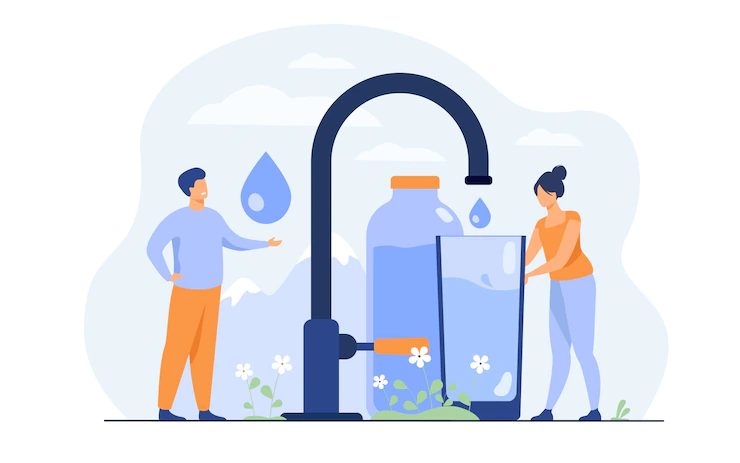Top 5 Use Cases Of Digital Twin Technology
Depending on the business objective, there can be three scenarios of digital twin use with different complexity levels.
Basic level: asset monitoring. To create a DT, data engineers collect pertinent data on the real-world object (historical sensor data, real-time data and maintenance data, etc.). In this way, they feed that information to a DT software that creates a virtual model of the object in the cloud. Such models take into consideration monitoring physical assets and collecting data on them for future use. On this level, DTs are no more than data historians with intuitive interfaces, both in terms of functionality and expenses.
Middle level: what-if simulations. Basic Digital Twins can be augmented with what-if models. This enables organizations to experiment with operational settings of assets or processes to find the optimal operational configuration.
Advanced level: AI-enabled systems. Digital Twins also can be equipped with ML algorithms that are trained on data collected by sensors. Such systems can quickly detect abnormal behavior and suggest or initiate corrective action.
Digital Twins in Retail

In the retail industry, digital twins may come in handy both in the supply chain and in-store. To create supply chain simulations, retailers use real-time sensor and equipment/ gear data, as well as ERP and other business system data. The models give an outline of supply chain’s performance including assets, warehouses, material flows, inventory positions, and people. To create in-store digital replicas, retailers use data captured by RFID readers, smart shelves and motion sensors. These models allow them to analyses customer movement and purchase behavior, as well as test the optimal arrangement and placement of products.
Real-Life Example: French Supermarket
Water utility organizations use digital twins to guarantee an uninterrupted water supply and be better prepared for emergency situations. With digital twins, they can accurately assess how the current water system behaves, identify failures before they happen, and simulate what-if scenarios.
Digital Twins in Utilities: Water Supply

Water utility organizations use digital twins to guarantee an uninterrupted water supply and be better prepared for emergency situations. With digital twins, they can accurately assess how the current water system behaves, identify failures before they happen, and simulate what-if scenarios.
Real-Life Example: Water Supply in the City
Aguas do Porto (AdP), a Portuguese utility organization, is responsible for the water supply in the city of Porto. AdP uses digital twin technology to forecast flooding and water quality issues, improve city services and responsiveness, and ensure resilience of water infrastructure.
The solution creates virtual models based on sensor and telemetry data together with the information across 20 other sources: customer service management, maintenance, billing, asset accounting, etc. Digital twins enable AdP to monitor the water supply systems in real-time. They also are used to create forecasts on water consumption and simulate situations of pipe bursts along with valve and pump shutdowns.
Digital Twins in Manufacturing

In industrial manufacturing, digital twins are used to simulate the production process. In view of the data from sensors connected to machines, manufacturing tools, and other devices, manufacturers can create virtual models of a real-world product, equipment elements, production process, or a whole system.
Thus, for production purposes, such simulations help track machine operation and adjust it in real-time. Augmented with machine learning algorithms, digital twin’s help manufacturing companies identify problems before they occur and predict future developments.
Real-Life Example: Consumer Goods Manufacturing
Unilever PLC is using digital twins to make the production process more efficient and adaptable. The company has made virtual models of its factories. At every location, the IoT sensors feed real-time performance data such as temperature and motor speed into the enterprise cloud. Using advanced analytics and machine learning algorithms, an IoT digital twin simulates complex what-if scenarios to identify the best functional and operational conditions. This helps manufacturers use materials more specifically and limit waste from products that don’t meet quality standards. At this moment, Unilever is operating eight digital twins across North America, South America, Europe, and Asia
Digital Twins in Healthcare

In healthcare, digital twins can be used for designing medical devices—vena cava filters in particular. It requires two virtual replicas: the patient’s digital twin with specific anatomical and physiological characteristics and the medical device’s digital twin with device parameters. By connecting both the models, healthcare researchers can see what happens when a particular device is installed into a patient’s body.
Digital twins also help optimize the device’s performance by running hundreds of simulations with different conditions and different patients.
Real-Life Example: Human Heart Models for Device Design
The Living Heart Project is an international research collaboration dedicated to developing and validating highly accurate customized digital human heart models based on MRI images and ECG data. The project involves the FDA, leading cardiovascular researchers, medical device developers, educators and practicing cardiologists. They are utilizing the digital twin heart to simulate in vivo (in a living organism) conditions, visualize anatomy that cannot be seen, and refine designs of cardio logical devices quickly. The team hopes this experiment will serve as a playbook for the future in silicon (performed via computer simulation) tests.
What’s next for Digital Twins?
The above digital twin examples have demonstrated a lot of benefits for organizations. Moreover, digital twins’ capabilities are getting more accessible even in small organizations. This is mainly enabled by rapidly improving modeling capabilities, the spread of IoT sensor installations, and the increasing availability of computing infrastructure and tools.


